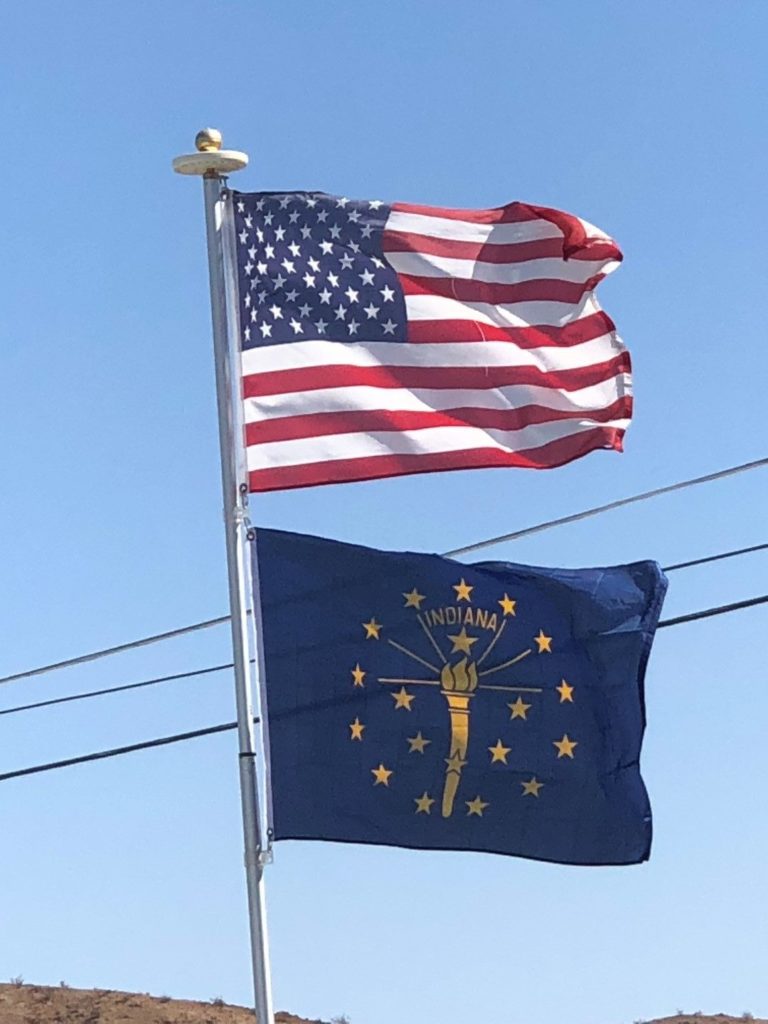The state includes two natural regions of the United States: the Central Lowlands and the Interior Low Plateaus. The till plains make up the northern and central regions of Indiana. Much of its appearance is a result of elements left behind by glaciers. Central Indiana is mainly flat with some low rolling hills and soil composed of glacial sands, gravel and clay, which results in exceptional farmland. Northern Indiana is similar, except for the presence of higher and hillier terminal moraines and hundreds of kettle lakes.
In northwest Indiana there are various sand ridges and dunes, some reaching nearly 200 feet in height.
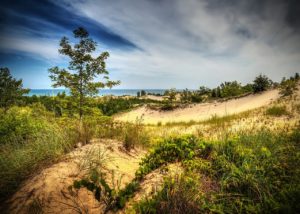
These are located along the Lake Michigan shoreline and also inland to the Kankakee Outwash Plain. Southern Indiana is characterized by valleys and rugged, hilly terrain, contrasting from much of the state. Here, bedrock is exposed at the surface and isn’t buried in glacial till like further north. Because of the prevalent Indiana limestone, there are numerous caves, caverns, and quarries in the area.
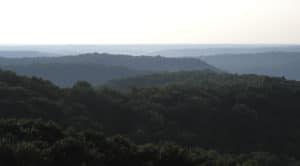
Economy:
Indiana has a diverse economy with a gross state product of $341.9 billion in 2016.
In 2016, Indiana was home to seven Fortune 500 companies with a combined $142.5 billion in revenue.
Northwest Indiana has been the largest steel producing center in the U.S. since 1975 and accounted for 27 percent of American-made steel in 2016.
Indiana is home to the international headquarters and research facilities of pharmaceutical company Eli Lilly in Indianapolis, the state’s largest corporation, as well as the world headquarters of Mead Johnson Nutritionals in Evansville. Overall, Indiana ranks fifth among all U.S. states in total sales and shipments of pharmaceutical products and second highest in the number of biopharmaceutical related jobs.
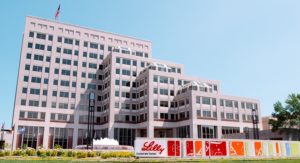
Other Fortune 500 companies headquartered in Indiana include Cummins, Inc. and Simon Property Group.
Indiana is located within the U.S. Corn Belt and Grain Belt. The state has a feedlot-style system raising corn to fatten hogs and cattle. Along with corn, soybeans are also a major cash crop. Its proximity to large urban centers, such as Indianapolis and Chicago, assure that dairying, egg production, and specialty horticulture occur. Other crops include melons, tomatoes, grapes, mint, popping corn, and tobacco in the southern counties. Most of the original land was not prairie and had to be cleared of deciduous trees. Many parcels of woodland remain and support a furniture-making sector in the southern portion of the state.
Transportation:
Indianapolis International Airport serves the greater Indianapolis area and has finished constructing a new passenger terminal. The new airport opened in November 2008 and offers a new midfield passenger terminal, concourses, air traffic control tower, parking garage, and airfield and apron improvements.
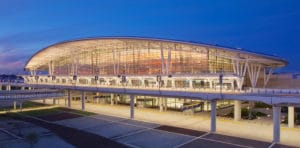
Other major airports include Evansville Regional Airport, Fort Wayne International Airport, and South Bend International Airport. A long-standing proposal to turn Gary Chicago International Airport into Chicago’s third major airport received a boost in early 2006 with the approval of $48 million in federal funding over the next ten years.
